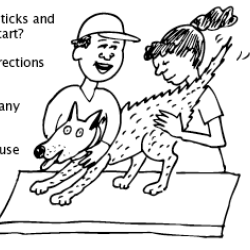Source Institutions
Source Institutions
Add to list Go to activity
Activity link broken? See if it's at the internet archive

This activity (on pages 19-25) is about fleas and ticks, which are common pet parasites. Learners first examine preserved tick and flea specimens under a magnifying lens and compare them for similarities and differences. They next examine a live pet -- brought in and supervised by an Adult Volunteer -- using a flea comb to search for fleas. Finally, learners create a drawing or comic strip showing how an animal becomes the host of a family of fleas or ticks, based on lists of given facts. The introductory "What We Know" section offers suggestions on preventing pets from getting parasites.
- 30 to 45 minutes
- 1 to 2 hours
- 1 cent - $1 per group of students
- Ages 8 - 14
- Activity, Lesson/Lesson Plan
- English, Spanish
Quick Guide
Materials List (per group of students)
- 4 plastic flea combs
- 1 plastic pipet or dropper
- Vials of fleas and ticks
- tape
- 2 small jar lids
- rubbing alcohol
- Adult volunteer with pet dog or cat on a leash and an old blanket or towel
- 2 magnifying lenses
- centimeter ruler
Keywords
Subjects
-
Life Sciences
-
Diversity of Life
- Animals
-
Ecology
- Biodiversity
-
Diversity of Life
Informal Categories
- Animals
Audience
To use this activity, learners need to:
- see
Learning styles supported:
- Involves teamwork and communication skills
- Uses STEM to solve real-world problems
- Involves hands-on or lab activities
Designed specifically for
- Rural dweller
Culture, ethnicity, and gender
-
Girls
- Explicity developed for this group
Other
Foreign language versions of this resource:
Components that are part of this resource:
Includes alignment to state and/or national standards:
This resource is part of:
Access Rights:
- Free access
By:
- University of Nebraska State Museum; Nebraska Cooperative Extension 4-H Youth Development
Source Collection
- Science After School Consumer's Guide
Rights:
- All rights reserved, University of Nebraska State Museum, 2001
Funding Sources:
- NSF Informal Science Education Program, 9909496
- Howard Hughes Medical Institute
